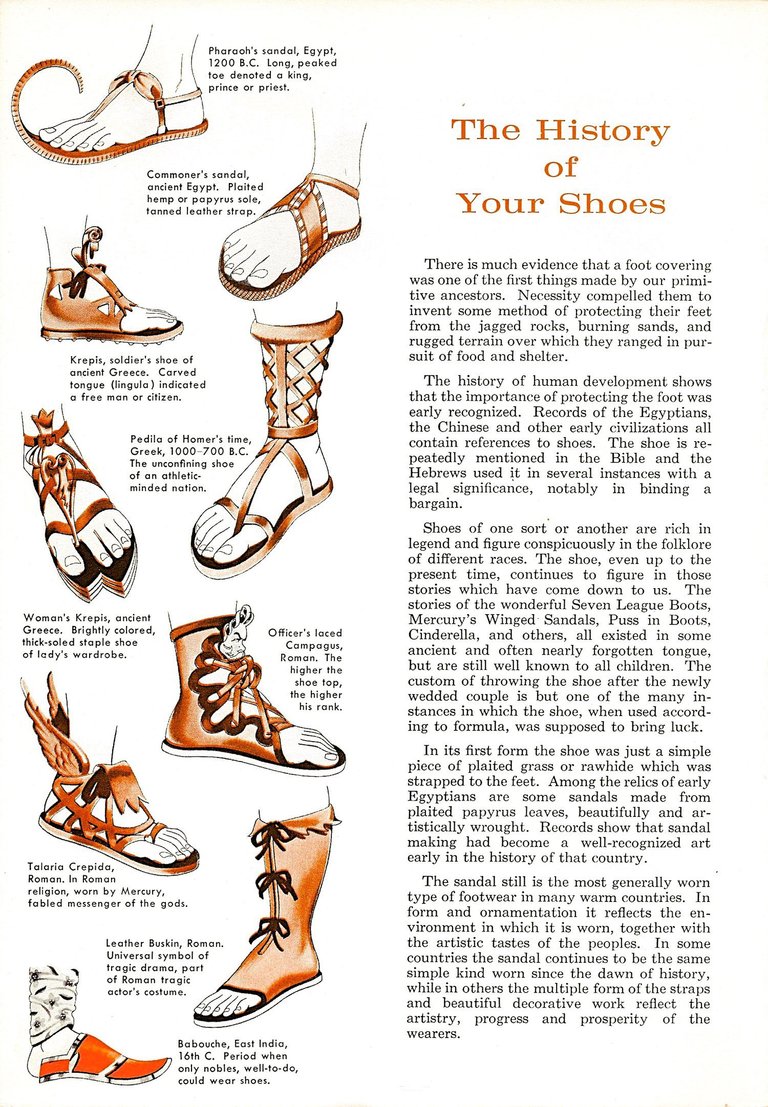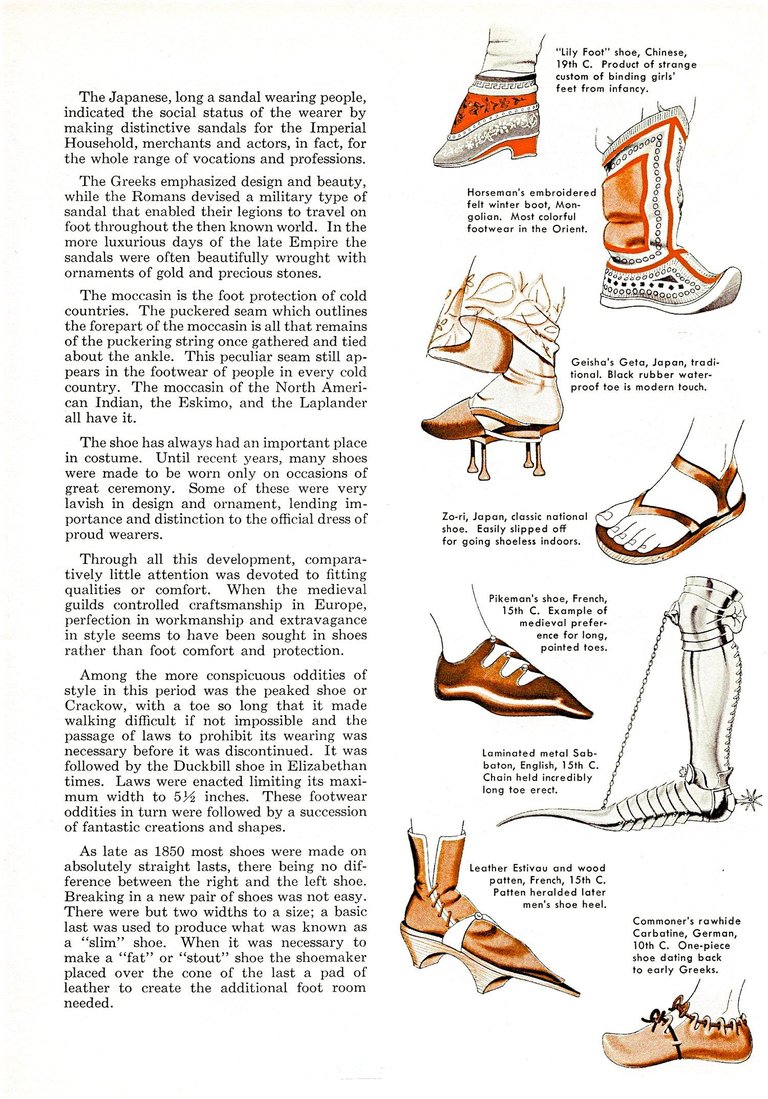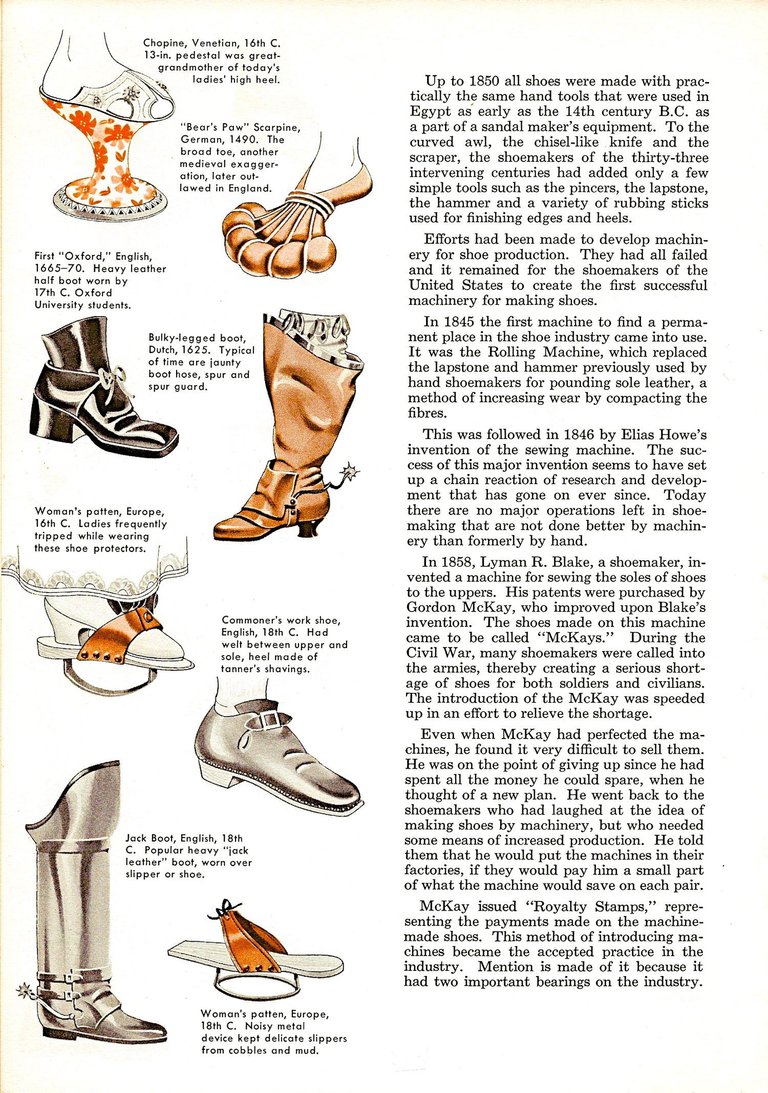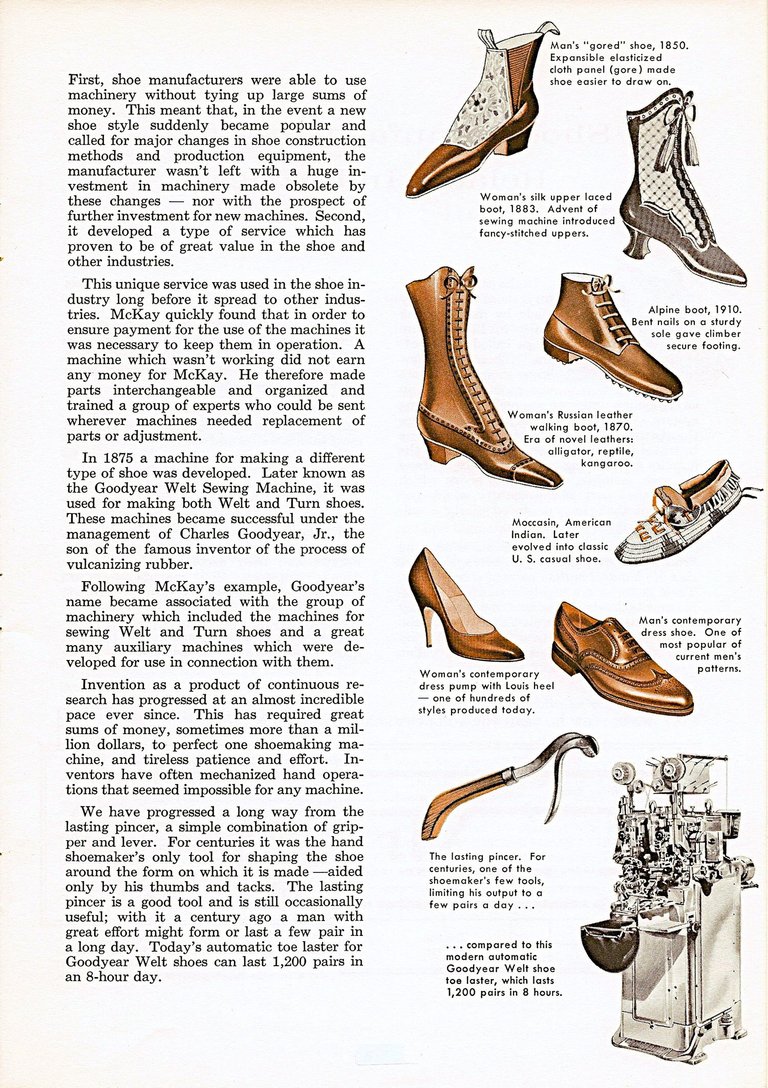The history of footwear is captivating, and it spans across millennia. It offers a glimpse into the evolution of human ingenuity and fashion. From humble beginnings in prehistoric times to the cutting-edge designs of the 21st century, shoes have played a significant role in human culture. Let's take a journey through time and explore the intriguing narrative of shoe history:
Prehistoric Times: Foot Protection in the Ancient World
In the depths of prehistory, early humans ingeniously crafted footwear from woven bark, leaves, and the skins of animals. These rudimentary yet effective coverings shielded their feet from the elements and rough terrains. A remarkable discovery in 2008 unveiled the world's oldest known leather shoe, a remarkable artifact dating back approximately 5,500 years. Found in an Armenian cave, this ancient relic provides tangible evidence of our ancestors' quest for practicality and protection.


Footwear in Ancient Civilizations: A Mirror of Culture
As civilizations flourished, footwear evolved into a reflection of cultural identity and social status. In the heart of ancient Egypt, papyrus shoes adorned the feet of individuals, embodying the fusion of functionality and artistic expression. The Greeks and Romans followed suit, each crafting their distinctive shoe styles. Notably, Roman soldiers donned the iconic caliga sandals with leg-enveloping straps, while Egyptian papyrus shoes offered comfort and style.
Symbolism through Soles: Footwear transcended mere utility and ventured into symbolism. In ancient Rome, brown leather shoes with crescent-shaped buckles became the hallmark of senators, while the Roman consul sported the elegance of white footwear. The Greek theatrical stage witnessed actors donning footwear as symbols: boots for the tragic, and sock-like shoes for the comic. These historical instances reflect the profound interplay between shoes and societal hierarchy.


Middle Ages: The Rise of Craftsmanship and Diversity
The Middle Ages ushered in a period of refinement in shoe design and craftsmanship. Cobblers emerged as skilled artisans, fashioning wooden-soled pattens for the common folk and embellished leather shoes for the elite. Amidst this dichotomy, the "poulaine," a shoe distinguished by its elongated, pointed toe, gained prominence among the European nobility. Meanwhile, East Asia boasted its array of traditional footwear, including the Chinese "lily" shoes, Japanese geta and zori, and Korean gomusin.
Renaissance and Beyond: Shoes as Fashion Statements
The Renaissance witnessed a transformative shift in footwear, as shoes evolved into captivating fashion statements. Borrowed from Persian horsemen, high heels gracefully stepped into European wardrobes. Excess in footwear encountered regulation through Sumptuary Laws, dictating the length of pointed shoes based on one's social class. This era underscored the power of shoes as symbols of status and refinement.
Practicality and Elegance: 17th to 18th Century
The practicality of high heels emerged in unexpected corners. Butchers, mindful of cleanliness, donned high heels to avoid unpleasant encounters with offal. In France, King Louis XIV harnessed the regal allure of high heels to command presence and stature. This intriguing blend of utility and elegance marked an era of intriguing contrasts.
Industrial Revolution: Crafting Shoes at Scale
The advent of the Industrial Revolution revolutionized the shoe manufacturing landscape. Machines tailored for leatherwork paved the way for mass production, democratizing access to footwear. A breakthrough in the mid-1800s introduced the vulcanized rubber sole, birthing the first sneakers - plimsolls - renowned for their silent tread.
20th Century: Style Diversification and Technological Leaps
The post-war era witnessed an explosion of shoe styles, fueled by technological innovations and shifting fashion sensibilities. Synthetic materials like vinyl and nylon democratized shoe production, culminating in the emergence of iconic athletic brands - Converse, Adidas, and Nike. Women's shoes embraced a kaleidoscope of styles, ranging from T-straps reminiscent of the flapper era to the chunky heels that defined the '70s.
21st Century: Where Tradition Meets Technology
The 21st century weaves a tapestry where tradition intertwines with cutting-edge technology. 3D printing breathes new life into shoe design, enabling a fusion of vintage elegance and futuristic aesthetics. "Smart" shoes, armed with tracking capabilities and innovative features, herald a new era of interactive footwear. Simultaneously, an artisanal resurgence celebrates the handmade, emphasizing ethical and sustainable practices. From recycled materials to reduced environmental impact, shoes become more than adornments - they embody conscious choices and values.
The history of shoes is an intricate narrative that spans continents, cultures, and epochs. From the early days of foot protection to the dynamic landscape of contemporary footwear, the journey is a testament to human creativity, resilience, and the ever-evolving relationship between style, functionality, and self-expression.
Source: twitter